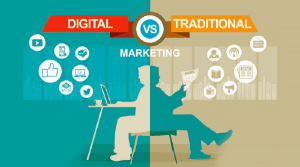The ad project
I hope you enjoyed my slider!
Now onto what I learned during the project and the steps and milestones that we worked on and did.
The first thing we did was a dissection of an ad. The ad was called Welcome Home, was made by apple.inc. We hadn’t learned anything about ads so the teachers most likely didn’t think that we would through out words like pathos, egos or logos and didn’t think that we would say a lot of stuff about advertising techniques other than what we felt and thought that other people would feel while watching the ad. Looking back at it I would surely say that it was directed at your pathos side because of the story that it told.
After that we had to read a book and do reflections on it. I don’t feel that I learned much from it so I’ll leave that out entirely.
After that the next assignment was an advertising survey we were going to survey older people like our parents to see their views on ads and other things around advertising like logos and if they collect any ads.
This taught me that I’m not that different from my dad as I have almost the same standards.
School wise I learned about how the ads in everyday life aren’t so convincing and that young people look for the same properties in advertising as older people. If I’m the average young person which my teachers tell me I am not (I am little bit more vocal than my friends). But that’s a discussion for another time.
I also learned that all the way back, when most of east Europe was still under the iron curtain which was the USSR and the East/West German wall had just come down, in the Eastern Block the ads still had the same properties and were never advertising things or services which people didn’t want.
Video ad
Onto the next assignment. This assignment was notes on a video that we watched about advertising in our generation. It was interesting but I’m not good at taking notes or remembering a video I watched two months ago. Along with that we had an assignment about what the advantages are with print ads VS online ads. For this we were supposed to use pathos, ethos and logos but it didn’t really need those so we wrote down the most obvious with the biggest factors.
Commercial ad and target audience
The next assignment we had was a commercial dig. For it we were answering questions. The first question was, does what you watch appeal to you? Or something along those lines.
So my answer was, Yes otherwise I wouldn’t watch videos or TV I only choose what I like and the ads are normally not what I like unless they’re car ads.
We also learned how target audience is important for ads.
Target Audience: What is your demographic?
Do the ads you watch make you more inclined to do things?
Can ads hurt people? How?
From this I learned and thought about how apps like YouTube make ads. Directly for you and your demographic but also show the ads which were payed the most money for. I also thought a lot about how ads can mess with campaigns and make parties and people seem better than they are, false advertising. This was also one of the first assignments we did where the demographic for which the ad was, was spoken about.
Appeals of advertisement
The next assignment was about the appeals of advertisements. For it we looked at pathos, ethos, logos and other advertising strategies. For the assignment, we would take five different car ads and then write about how they showed pathos, ethos, logos, and other advertising strategies. Here is an example of one.
Through this I learned about pathos, ethos and logos. I also learned just how many methods of persuasion are used in ads. Depending on the target audience the ad would differ. For example a car ad targeted to a soccer mum will show kids going in it and soccer related things. It might have something with logos and say that it has got the perfect equipment and the perfect shape to take your kids wherever you need to. If it‘s an ad for a gadget of toy then it might have have things for how it makes you so much happier and have lots of happy people using it.
There are a lot of techniques for advertising different products and services. Here are some of the ones that we learned about.
1. Weasel Words: a message or promise is implied but not definite; they are empty claims.
2. Unfinished Claims: a comparison is started but left unfinished; they are dangling claims.
3. ‘We’re different and unique’ Claim: states there is nothing else quite like the advertised product.
4. ‘Water is Wet’ Claim: the claim is true for any brand in that product category.
5. ‘So What’ Claim: the claim is true but gives no real advantage to the product.
6. Vague Claim: uses colourful words that are totally meaningless, overlaps with #1.
7. Scientific or Statistical Claim: uses scientific proof, numbers or impressive ingredients to support the product’s superiority.
8. ‘Compliment the Consumer’ Claim: flatters the potential customer.
9. Testimonial: uses celebrities or authorities to speak on the product’s behalf.
10. Rhetorical Question: asks a question that the viewer is supposed to answer in a way that affirms a product’s goodness.
11. Name Calling: makes fun of or is unflattering about the competition.
12. Plain Folks: uses average, typical people.
Ways to get your message to your target audience
Even with the best ads your ad wont get anyone to buy your product unless there‘s a good way to get your ad to the people. That‘s why it‘s good to know which apps to use and where to advertise. This picture can give you a few hints.
To sum it all up I learned about advertising techniques, pathos, ethos and logos, target demographics which are just groups of people who like the same thing. I also learned how to take my work and the feedback I got on it and combine them to make my work be in the end better. To do this, I would mostly make small changes but mostly, especially at the start or when I didn’t know what I wanted to do or didn‘t do what I was going for I‘d make all-out changes and go from that. You can see that from the slider at the start of my trial and error.













